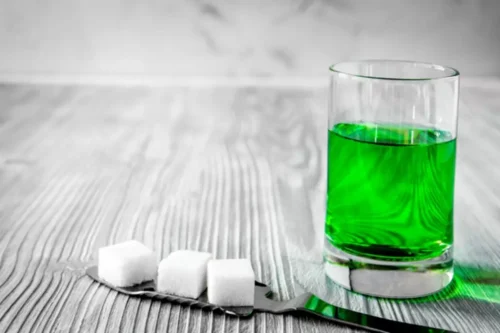
Descrizione

Prolonged abstinence along with healthy eating and exercise during this stage can also allow people to begin recovery from liver damage. Contemplation can be an uncomfortable process, and feelings of guilt, shame, hopelessness and desperation are common as people reach stages of alcoholic recovery this crossroads in their addiction journey. At this stage, defense mechanisms are in high gear, and people are reluctant to even acknowledge they have a problem. They may try to avoid the topic of their drinking or minimize the negative impacts of their alcohol use.
- Many people include this stage as the final step in the path to recovery.
- Unstable vital signs increase the risk of complications and can be managed with medications.
- Keep in mind that everyone’s experience with alcohol use disorder is unique and valid, and we encourage you to discuss your personal circumstances and goals with your Care Team for individualized advice.
- Saying a mantra, substituting thoughts of recovery goals, praying, reading something recovery-related, reaching out to someone supportive—all are useful tactics.
- Establishing rapport between client and practitioner becomes pivotal, with identified short-term and long-term goals pursued actively through client motivation.
Alcohol Misuse and Binge Drinking
Recovery from an alcohol use disorder requires effort, time, willpower, and support. When you decide to enter a professional alcohol and drug treatment program, you will begin a journey through four distinct stages of rehab recovery as you learn to develop a healthy and sober lifestyle. Taking action is a very important step in the substance abuse recovery process, and it is one in which it’s important to have support as you make changes. It can feel stressful to change, which is why the support a person receives in drug and alcohol treatment can be so important in continuing the process of addiction recovery.
Understanding Motivation and Behavioral Change: The Stages of Change Model
But this isn’t a good time for sweeping changes, like a career switch. This stage of recovery begins the moment you decide to stop drinking. Most of your efforts are aimed at managing the urge to drink, but it’s about more than just saying no. In the next section, we will explore the importance of embracing a sober lifestyle and the ongoing support required to continue the journey of recovery. If you or someone you know is struggling with substance abuse, reach out to the resources listed above and take the first step toward a better life. People can start their journey toward sobriety by recognizing the signs and symptoms of each stage, seeking timely help, and utilizing the available resources.
The 12 Steps
While the most complete and accurate answers will ultimately come with time and experience, there are common patterns in the first year of sobriety or moderation that can help set expectations. You’ll find that what you’re experiencing is normal, and most likely, an indicator of progress towards treating alcohol dependency (even if it doesn’t feel that way yet). To find another treatment program, browse the top-rated addiction treatment facilities in each state by visiting our homepage, or by viewing the SAMHSA Treatment Services Locator.

A support system can help individuals stay accountable, provide guidance during difficult times, and celebrate milestones and achievements. It’s important to remember that different individuals respond differently to various therapeutic approaches. A comprehensive and individualized treatment plan may incorporate a combination of these techniques to address the specific needs of each person on their journey to sobriety.

That’s what the preparation stage is all about in addiction recovery. The most severe form of alcohol withdrawal is delirium tremens (DTs), characterized by altered mental status and severe autonomic hyperactivity that may lead to cardiovascular collapse. Only about 5 percent of patients with alcohol withdrawal progress to DTs, but about 5 percent of these patients die. At this stage, drinking becomes https://ecosoberhouse.com/ everything in your life, even at the expense of your livelihood, your health and your relationships. Attempts to stop drinking can result in tremors or hallucinations, but therapy, detox, and rehab can help you get your life back. Quitting drinking can have many important benefits for your physical and mental health, but there are many other types of benefits you may experience as well.

If you started in a residential treatment program, you will now move to the continuing or follow-up counseling phase of your rehab program on an outpatient basis. In this stage, individuals begin to recognize that their addiction is causing problems in their life. They start to consider the possibility of change, but they’re not quite ready to commit to action. It’s a stage marked by ambivalence – a push and pull between the desire to change and the comfort of familiar habits. One of the biggest challenges in the precontemplation stage of addiction is breaking through this wall of denial.
How to overcome alcohol cravings?

The prospect of change engages people in an inner dialogue about hope, disappointment, and accountability. Saying a mantra, substituting thoughts of recovery goals, praying, reading something recovery-related, reaching out to someone supportive—all are useful tactics. Cravings diminish and disappear in time unless attention is focused on them. Negotiating with oneself for a delay of use, which doesn’t deny the possibility of future use, and then getting busy with something else, capitalizes on the knowledge that cravings dissipate in about 15 minutes. Combining therapy with support groups can greatly improve your odds of success. Therapy combined with an AUD program tends to lead to a high recovery success rate.
- They’ll rediscover favorite hobbies that were left in the past and will likely pick up new ones as well.
- By Michelle PugleMichelle Pugle, MA is a freelance writer and reporter focusing on mental health and chronic conditions.
- While naltrexone is generally well tolerated, nausea and headaches are the most common side effects.
- Remember, the journey of recovery is unique to each individual, and progress may vary.
- Learning new coping skills for dealing with unpleasant feelings is another pillar of recovery.
- For those with alcohol use disorder, withdrawal is just the first (but very important) step on a long journey to recovery.


